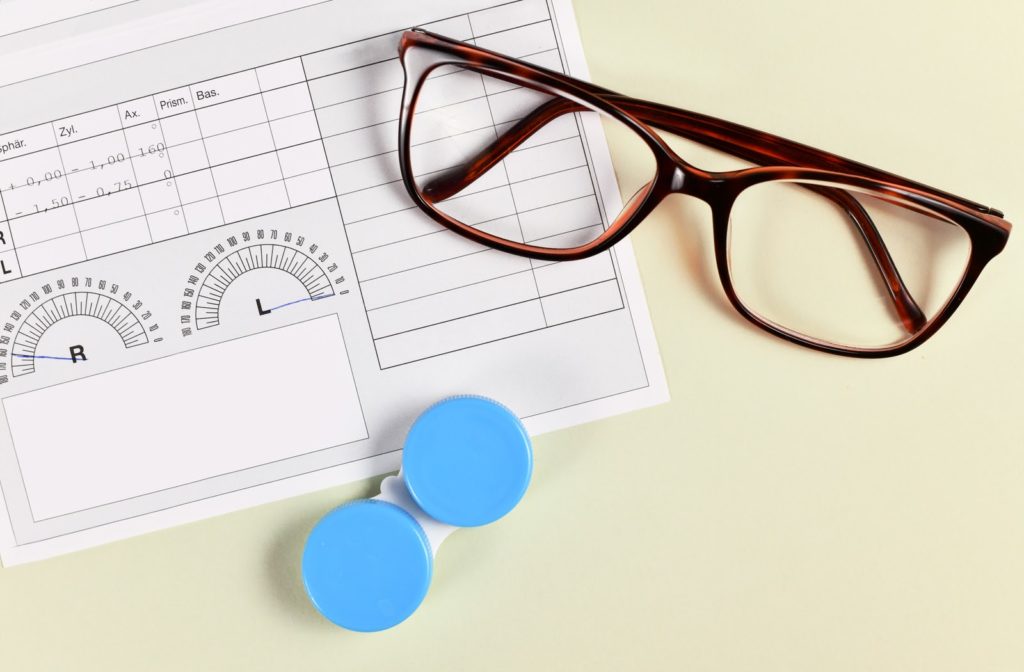To understand refractive errors, we need to first understand how our eyes see. The way that our eyes bend (refract) light, is how we see everything around us, and when there are optical imperfections present, this creates blurred vision and makes it difficult for our eyes to focus light properly, called a refractive error.
The primary refractive errors are astigmatism, myopia (nearsightedness), and hyperopia (farsightedness) and are typically diagnosed by an eye care professional. There are many options available for treating refractive errors, with technology constantly evolving, speaking with your eye doctor is the best way to stay current with all of your available options when experiencing visual difficulties.
What Causes Refractive Errors?
The eye’s ability to sharply focus light is based primarily on 3 anatomical features:
- Eye length. If the eye is too long, the light reaching the retina is already focused, causing nearsightedness (myopia). If the eye is too short, the light reaching the retina is not focused enough, causing farsightedness (hyperopia).
- The curvature of the cornea. If the shape of the cornea is not perfectly spherical, then images are focused or refracted irregularly causing astigmatism. Individuals can be nearsighted or farsighted with or without astigmatism.
- The curvature of the lens. If the lens is steeply curved in relation to the length of the eye and curvature of the cornea, this causes nearsightedness. If the lens is too flat, this causes farsightedness.
Tests and Diagnosis
Meeting with an eye care professional is the best way to diagnose a refractive error. This is typically done by going for a routine eye exam, where the eye doctor will have you read off of a vision chart as they test various lenses to determine the degree of potential vision correction that may be required.
Although digital testing is also available, it’s not usually required to determine whether there is a refractive error present.
It is possible that following your refraction testing you are found to have more than 1 refractive error, your eye doctor can go through many different options to assist in correcting your vision such as prescription glasses, contact lenses, and laser eye surgery.
Defining Refractive Errors
- Myopia. Also called nearsightedness, this is where close objects are clear, and distant objects are blurry.
- Hyperopia. Also called farsightedness, this is where distant objects are clear and close objects are blurry.
- Astigmatism. Occurs when the cornea is not equally curved in all directions, causing light entering the cornea to not be focused equally on all planes (distorted or blurry vision).
Treatment
There are 3 main ways to correct refractive errors, they are:
- Prescription glasses. Different refractive errors require different types of prescription glasses to correct vision, some of the available options are:
- Reading glasses, which are usually available at most drug stores and convenience stores, do not require a prescription, however, it’s best to have regular eye exams to ensure you are getting the corrective lenses that you need.
- Single vision prescription lenses, which help to correct nearsightedness or farsightedness, but not both simultaneously.
- Multifocal prescription lenses, which correct both near and distance vision and can also assist with middle-distance vision in the fields between near and distance vision.
- Contact Lenses. These sit on the surface of your eyes rather than in front of them, and are a good option for when wearing glasses may not be convenient. They come in many configurations to suit your needs for vision correction and lifestyle such as soft or hard lenses, daily and extended wear options, as well as single-use. It’s ultimately best to toggle between contact lenses and prescription glasses, as with constant contact lens usage you may want to give your eyes a break and provide them with additional oxygen by wearing your glasses from time to time.
- Laser eye surgery. There are various technologies in regard to laser eye surgery, but the main focus is to change the shape of your cornea to fix refractive errors. If this is the direction you may be considering, it’s best to meet with your eye doctor to determine if you are a candidate, and to weigh out the potential benefits and drawbacks first.
In general, routine eye exams are the best method for detecting any correction that your vision may require. With varying degrees of severity and complexity associated with certain refractive errors and eye conditions, keeping things in check on a regular basis is the best practice.


